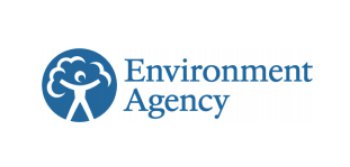The UK Environment Agency has just issued a report entitled ‘Measuring landfill methane emissions using unmanned aerial systems: field trial and operational guidance‘. It builds on a previous feasibility study of methane sensing from an unmanned aerial system (UAS), which presented guidance on sensor and platform technology, together with regulatory requirements. Here the aim is to develop and validate a robust method to quantify whole site methane emissions from landfills using measurements from a UAS.
The report describes the development of operational airborne UAS platforms equipped for greenhouse gas sampling with a focus on methane concentration determination along a designated flight path around landfill sites.
The project was conducted in 3 parts: • development, integration and testing of quasi-static (rotary) and moving (fixed wing) platforms • planning and execution of a field trial of both systems at a landfill site • assessment of the data and methane flux methodology with guidance for future operational practice
The platforms were integrated, tested and operated successfully for 10 days of field work, with many important lessons learned for future operational guidance. This report details those activities and provides guidance on flight design and operational practice in varying environmental conditions. It also presents a method for methane flux calculation and uncertainty, and discusses the utility and limitations of the method in practice.
Main findings
These relate to current operational limitations and further work.
There are no current high precision methane instruments (defined in the feasibility study as <40 parts per billion @ 1Hz) suitable for a small fixed wing UAS platform. It is anticipated that such instruments will become available in the near future. Future methane instruments may also be suitable for rotary UAS platforms.
The uncertainty analysis suggests that measurement uncertainty is a very small component of the total uncertainty. This means that it may be possible to yield satisfactory flux uncertainties (<10%) with less precise methane instrumentation than originally suggested. Even less precise instrumentation may be required in cases where the upwind background and the plume morphology can be more adequately constrained and sampled respectively. Instruments with such levels of precision are already becoming available.
The flight control and flight management software stacks for multi-rotors is more mature than the equivalent software for fixed wing UASs. This stems from 2 aspects: the requirement for sophisticated software to control multi-rotors; and the current dominance of photography in the market for small UASs. The result is that, for some applications, multi-rotors are the preferred solution; however, their lower productivity would preclude them from use on larger sites.
The mechanical design limitations also stem from current external market trends. To maximise the productivity of small-fixed wing systems, it is advisable get close to, and remain under, a mass of 7kg. This maximises single flight duration and daily sampling. The issue is that most commercially available, reasonably priced fixed wing systems are not designed to facilitate these operations. Set-up and breakdown time are excessive and individual components are not designed for heavy use. This is in vi Measuring landfill methane emissions using unmanned aerial systems: field trial and operational guidance contrast to similarly sized multi-rotors which often have folding arms and quick release attachments.
The final operational limitation of the mass balance approach is the need to fly circuits of the entire site. This guarantees that both upwind and downwind conditions are sampled, independent of the wind direction, and both lateral extremes of the plume are captured. But due to site access and safety considerations this is not currently possible during normal operational hours. This stems from a combination of site operational procedures and Civil Aviation Authority (CAA) regulations, which require that the aircraft remains 50 metres clear and not overhead of any individuals not under the control of the aircraft operator. This limitation could be addressed by downwind sampling that goes beyond the lateral extent of the plume. This would give a good handle on the background, but may not capture any significant source immediately upwind of the site of interest.
The limitations set out above can easily be addressed through UAS design, construction, careful flight (and sampling) design, and operational procedure development. It is recommended that any production system consists of an integral aircraft, flight control, flight management, sensor system and mission management capability. This allows control over both the hardware and software components, allowing repeatable operations and measurements. Recent changes in CAA policy mean that an operator only has to be cleared to operate a generic <7kg general UAS for aerial work. This reduces the burden of providing an entire system.
Improved software and hardware systems, operator procedures and co-ordination with site personnel have the potential to mitigate the site access limitations. Furthermore, since most operations take place on controlled access sites, it is possible to develop procedures that allow operations across the entire site during normal operational hours.
Emergent methane sensors may be adequate for UAS flux calculation within nominal uncertainties of ~10% in relative terms and are ready to be trialled.
In future work, the approach set out in this report would benefit from further validation against alternative tested approaches to examine sources of systematic bias or uncertainty resulting from sampling
The full report can be downloaded here.
Source: UK Government

